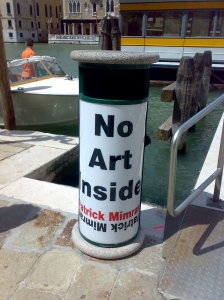The Dümmer See, a lake in Germany’s Lower Saxony close to where I was born, suffers from heavy nutrient pollution. During spring and summer, the lake is full of blue-green algae or cyanobacteria and it is frequently forbidden to swim in the waters. This is caused mainly by two factors: to prevent floodings the lake is surrounded by dykes which takes the possibility to filter the shallow waters and results in silting. The second factor is massive cattle farming in the area around the lake, one of the most extensive in Central Europe. The liquid manure accruing from this is distributed on the farming land to grow crops and large amounts of it eventually ends in the Dümmer See. It is estimated that 30 tons of phosphorus every year is spilled into the lake depriving fish and other organisms of oxygen.
Last year I dunked my hydrophone into the green, muddy water of the lake to see if I can hear anything at all. Surprisingly I found a constant chirping that was onmipresent in the lake, I heard it everywhere I put my underwater microphone in the waters, even in ditches around the lake. I have no idea what species this is, I guess it must be a small water bug that seems to find perfect conditions in the polluted lake. This example is a close-up of one bug I recorded from a jetty in Lembruch. The other sounds come from the waves lapping against the jetty.









